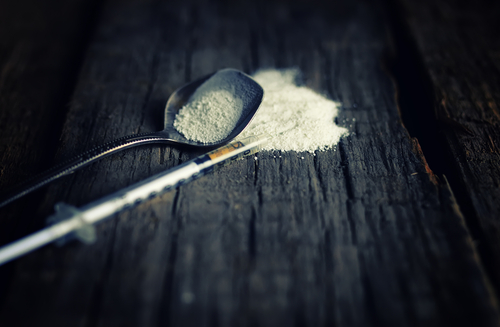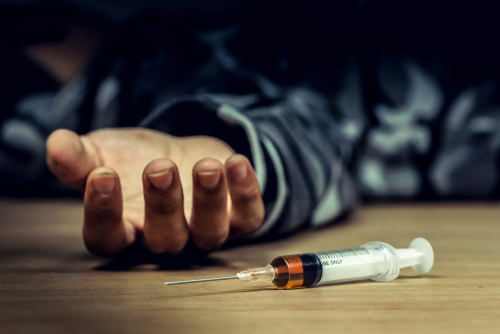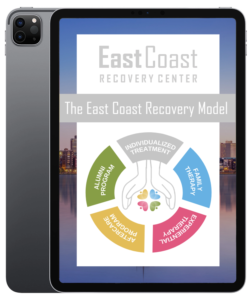When you hear “speedball drugs” or “speedballing,” you might think of John Belushi, Chris Farley, or Philip Seymour Hoffman, just a few celebrities taken away by this dangerous combination of substances. As new substances such as Fentanyl and Xylazine spread across the United States and became easily accessible, the definition of speedballing expanded to include other combinations of stimulants and depressants, no longer limited exclusively to cocaine and heroin.
This brief article provides a complete guide to speedball drugs, including different types of combinations, how they increase the risk of overdose, and the short and long-term side effects of polydrug abuse.
What Are Speedball Drugs?
Speedball drugs are combinations of central nervous system stimulants and depressants, such as cocaine or methamphetamine and heroin or oxycodone. These deadly combinations produce more intense and longer-lasting highs than the substances do individually. This is why combining substances remains popular today as new drugs hit the streets, providing dangerously accessible varieties.
However, most stimulants and depressants come with extreme risks of addiction if abused, and none of them are ever prescribed to be taken together. Because if they are, the risk of addiction doubles. Most people who take or want to take speedball drugs are unaware that combining opposite substances does not cancel each other out or create “middle ground” effects. Stimulants and depressants can mask each other’s side effects, and users can fail to notice respiratory failure, heart attacks, strokes, and overdoses, both in themselves and those around them.
Read more: What Is Crossfading & How It Can Lead To Polysubstance Addiction

Other Names & Types Of Speedball Drugs
While the classic speedball combination involves mixing and injecting heroin powder with cocaine powder, some people mix their own combinations of:
- Crack cocaine and heroin
- Methamphetamine or amphetamines (Adderall, Ritalin, Methylin) and opioids
- Oxycodone, Hydrocodone, or other prescription opioids instead of heroin
- Fentanyl, heroin, and cocaine as “super speedballs”
Speedball drugs also have various street names and slang terms, including:
- Powerballs
- Goofballs (combinations of meth or amphetamines)
- H & C
- Belushi (coined after John Belushi)
- Bombita (Spanish word for light bulbs)
- Snowballs
- Screwballs
- Spaceballs
- Speedyballing
- Dynamite
How Speedball Drugs Increase Overdose Risk
Combining opposing drug types can significantly increase the risk of overdose for several reasons:
- Synergy between stimulant and depressant effects: When a person uses a stimulant like cocaine or methamphetamine, they experience heightened alertness, increased energy, and a rush of euphoria. Conversely, depressant drugs like heroin or fentanyl induce a sense of calm, relaxation, and sedation. When these two types of drugs are taken together, they create a synergistic effect, potentially masking some of the negative side effects of each drug.
- Reduced perception of intoxication: Due to the counteracting effects of stimulants and depressants, individuals who use speedballs may perceive themselves as less intoxicated than they truly are. This can lead to overconfidence and a belief that they can handle more or higher doses of drugs without adverse consequences.
- Unknown drug content: In the context of the opioid epidemic, the presence of illicitly manufactured fentanyl, which is extremely potent and can be lethal even in small amounts, has exacerbated the risk of overdose. Some individuals knowingly seek out fentanyl for its potent effects, but many are unaware that fentanyl is present in speedballs.
- Respiratory depression: Combining stimulants and depressants can disrupt the body’s ability to regulate breathing, leading to a potentially life-threatening condition known as respiratory depression. Because the effects of cocaine wear off faster than opioids, the body can become overwhelmed with the sudden intensity of heroin that cocaine was masking.
- Fatal speedball overdoses have also resulted from strokes, aneurysms, and heart attacks.
Other Side Effects Of Speedballing
While speedball drugs are known to cause a heightened sense of euphoria and energy, they can also cause extreme negative side effects, such as:
- Anxiety, paranoia, and panic attacks
- Depression
- Confusion, slurred speech, and trouble thinking
- Cognitive impairment or psychosis
- Hypertension (high blood pressure)
- Racing heartbeat
- Near-unconsciousness or insensibility (stupor)
- Increased tolerance (users will have to take more of each substance to feel the same effects, increasing the risk of fatal side effects). Just because you can’t feel the drugs at their peak effects doesn’t mean they’re not in your system.
Read more: 10 Tips on How to Quit Cocaine
Long-term Effects Of Abusing Speedball Drugs
Besides the risk of overdose, speedball drugs can leave behind long-term, life-changing effects that can impact an individual’s entire life. These include:
- Abscesses, Cellulitis, and Tissue Necrosis: Injecting combinations of heroin and cocaine can result in abscesses (painful, swollen, and pus-filled areas), cellulitis (a skin infection), and tissue necrosis (death of body tissue) at the injection site.
- Bloodborne diseases: Sharing needles or using unclean injection equipment significantly increases the risk of contracting diseases like HIV and hepatitis.
- Vascular inflammation and clogging: Injected drug particles can cause inflammation and blockage in blood vessels, impairing blood flow and potentially leading to serious cardiovascular problems.
- Anorexia and malnourishment: Prolonged speedball use can lead to anorexia (loss of appetite) and malnourishment, as the combined drugs can suppress appetite and disrupt healthy eating habits.
- Stroke: Speedball drug abuse increases the risk of both ischemic (blocked blood vessel) and hemorrhagic (bleeding in the brain) strokes, which can result in long-term disabilities or even death.
- Ischemic organ damage: Reduced blood flow from vascular problems can lead to ischemic damage in various organs, causing long-term health issues.
- Gastrointestinal ulcerations: Speedballs can cause ulcerations in the gastrointestinal (GI) tract, leading to chronic pain, bleeding, and digestive problems.
- Kidney and liver injury: These drugs can damage the kidneys and liver, resulting in chronic kidney disease or liver disorders.
- Heart complications: Long-term speedball use can lead to heart muscle inflammation, aortic ruptures (tears in the aorta, the largest artery in the body), and heart attacks, which can be fatal.
- Seizures: Some individuals may experience seizures due to drug-induced changes in brain chemistry and function.
- Cognitive impairments: Persistent drug abuse can cause long-lasting cognitive impairments, affecting memory, attention, and decision-making abilities.
- Parkinson’s disease risk: There is an increased risk of developing Parkinson’s disease in individuals who abuse certain drugs like cocaine and methamphetamine over the long term.
- Impulsivity problems: Chronic use of speedball drugs can lead to impulsive behavior, making it challenging for individuals to control their actions or make rational decisions.
- Addiction: Perhaps the most significant long-term effect is addiction itself. Speedballs are highly addictive, and individuals who abuse them often struggle with substance dependence, making it difficult to quit and leading to a cycle of drug abuse and its associated consequences.
- Withdrawal difficulties: Once an individual develops polysubstance dependence, it can be harder to detox from both substances while dealing with both withdrawal symptoms simultaneously.

Contact East Coast Recovery Center
If you or someone you know is abusing speedball drugs and want to leave addiction and damaging habits behind, contact East Coast Recovery Center in Boston, MA. Our addiction treatment center is trained to help individuals with opioid use disorders, cocaine use disorders, and polysubstance dependence.
East Coast Recovery doesn’t believe in just providing medication or keeping clients overnight so they don’t relapse. We include comprehensive and holistic therapy methods in all of our treatment programs to help individuals find healthy coping mechanisms and explore traumatic experiences and underlying mental health disorders. Call today and find true recovery and wellness.











